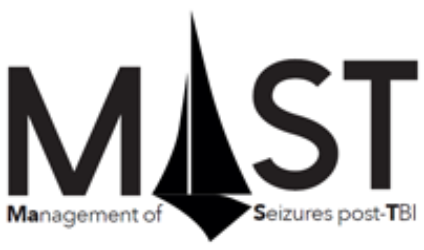Post-traumatic seizures (PTS) can lead to derangement of brain physiology, which can lead to brain herniation and death. The incidence of early PTS (within 7 days post-TBI) is as high as 14% and prevention of seizures can limit these outcomes and may prevent the development of late PTS (after 7 days). This is the rationale for seizure prophylaxis with an anti-epileptic drug (AED). Late PTS within 24 months can have a negative impact of quality of life, return to work, return to driving, and can even result in death. However, there is no high-quality evidence regarding the optimal duration of treatment for patients who have been started on an AED for acute PTS. AEDs are associated with various side effects. The trial aims to define best practice in the use of AED for TBI patients. We will achieve this by conducting two closely related clinical trials (PROPHYLAXIS and DURATION), which will run in parallel but independently of each other. MAST PROPHYLAXIS will compare the clinical effectiveness (absolute difference in the rate of PTS within the first 2 weeks post-TBI) of a 7-day course of phenytoin or levetiracetam, used as seizure prophylaxis, versus no AED for TBI patients. MAST DURATION will compare the clinical effectiveness (absolute difference in the rate of late PTS within 24 months post-TBI) of a longer course of phenytoin or levetiracetam (at least 6 months) versus a shorter course (up to 3 months) for TBI patients with early PTS.
Eligibility criteria
MAST-PROPHYLAXIS
Inclusion Criteria:
- Patients aged ≥10 years with a TBI managed in an NSU
- Patients without an acute symptomatic seizure within the first 7 days following trauma
- Structural changes confirmed by imaging*
- Patient or Legal Representative is willing and able to provide informed consent or in the absence of a legal representative, an Independent Healthcare Professional provides authorisation for patient enrolment
*Data to be retrieved from clinically performed imaging tests performed as part of routine care
Exclusion Criteria:
- Post-traumatic seizures
- Un-survivable injury
- Previous history of epilepsy
- Patients who are on an AED pre-TBI
- Pregnancy or breastfeeding
- Any hypersensitivity to study drug (or hydantoins or pyrrolidone derivatives) or any of its excipients
- Time interval from the time of trauma to randomisation exceeds 2 days
MAST-DURATION
Inclusion Criteria:
- Patients aged ≥10 years with a TBI managed in an NSU
- Patients who have started on phenytoin or levetiracetam due to an acute symptomatic seizure within the first 7 days following trauma
- Patient or Legal Representative is willing and able to provide informed consent or in the absence of a legal representative, an Independent Healthcare Professional provides authorisation for patient enrolment
Exclusion Criteria:
- Un-survivable injury
- Previous history of epilepsy
- Patients who are on an AED pre-TBI
- Patient who has been clinically prescribed an AED to treat PTS (other than phenytoin or levetiracetam) since current admission
- Any hypersensitivity to study drug (or hydantoins or pyrrolidone derivatives) or any of its excipients
Primary outcome measures:
- MAST-DURATION: Occurrence of late PTS within 24 months after TBI.
- MAST-PROPHYLAXIS: Occurrence of PTS within 2 weeks after TBI.
Secondary outcome measures:
- PTS up to 2 years (MAST-PROPHYLAXIS only)
- Extended Glasgow Outcome Scale at 6, 12, 18 and 24 months
- Neurobehavioural Symptom Inventory at 6, 12, 18 and 24 months
- Quality of life (EQ-5D-5L) at 6, 12, 18 and 24 months
- Liverpool Adverse Events Profile at 6, 12, 18 and 24 months
- Economic evaluation
- Frequency of PTS
- Mortality
- Adverse events of special interest during treatment
Sample size
MAST-PROPHYLAXIS: 1221 patients in total (130 in an internal pilot)
MAST-DURATION: 428 patients in total (50 in an internal pilot)
Funding Acknowledgement:
This project is funded by the National Institute for Health Research Health Technology Assessment programme (NIHR128226)
